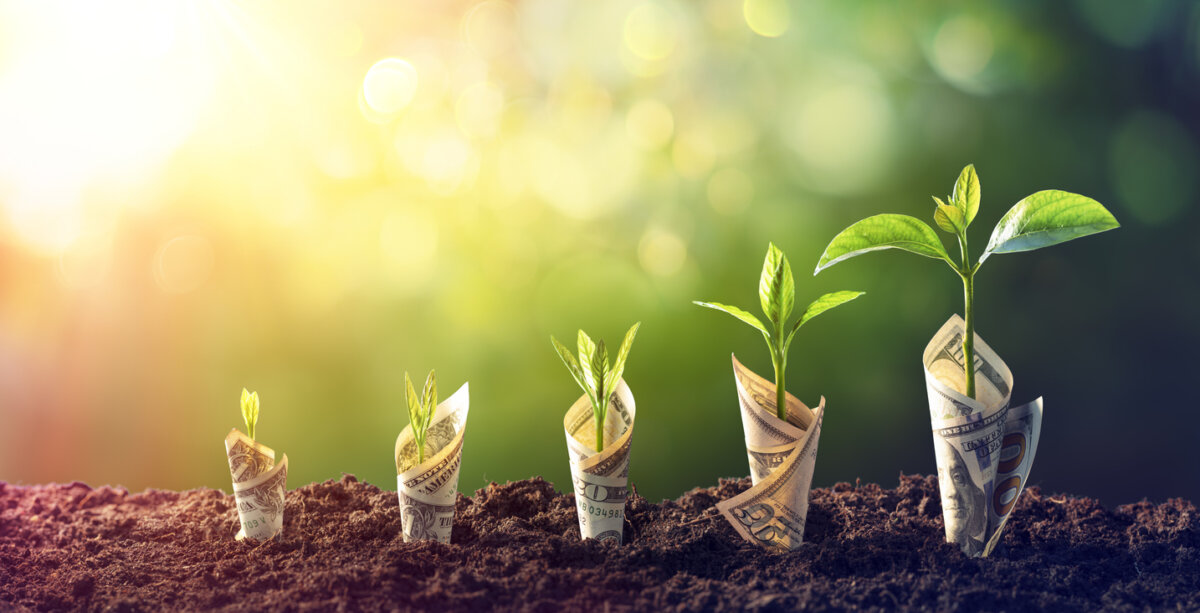
Sustainable gardening won’t break the bank. Over time, it can actually reduce the cost to care for your landscape and the time needed to maintain it.
This month, in honor of our 30th anniversary and Earth Day, we’re busting myths about sustainable gardening. Myth 3: Sustainable gardening costs too much.
We think this myth is widespread because some people make an initial financial investment in sustainable gardening. For example, they may build raised vegetable beds, contour an area for a rain garden, buy a load of compost to improve the soil or switch to organic fertilizers that cost a little more.
Truth: Gardening sustainably can save you money
Sustainable gardening does not require that you make expensive changes to your landscape. In fact, over time it can actually reduce the cost of caring for your landscape, and it often takes less time and effort too.
Here are some tips on how to adopt sustainable gardening practices without breaking the bank.
Consult the pros
Consult the experts when designing or redesigning your garden or landscape. Design professionals, books and websites can help you create a more sustainable garden design. An investment in gathering information will save you time and money in the long run. Here are some tips on design for a low-maintenance landscape and how to set landscape design goals.
Our experienced landscape designers and installers can help you create a more sustainable yard and garden, whether you are starting from scratch with a new landscape or updating an existing landscape.
Improve your soil
Good soil is the key to a sustainable garden and will save you both money and time. Your investment in compost, organic mulch or similar products will pay off in:
- Healthier plants that thrive
- Increased yield of vegetables and fruits
- Less need for pest control, watering and fertilization
Read 7 tips to build soil health.
Choose plants that use less water and resist pests and diseases
These plants do not cost more and are easier to care for. Drought-tolerant plants will save you money and time on watering. Here are lists of drought-tolerant plants:
Native plants are a good choice for a sustainable garden because they thrive in local conditions. In addition to native plants, you can find other plants with varieties that will do well in our local conditions, such as rhododendrons that resist root weevils and roses that resist black spot. Here are native plant lists from:
If your existing plants thrive, keep them
Keep plants that thrive in your landscape and only replace troublesome plants. Keeping healthy, disease-free trees should be the number one priority. Trees are important assets, helping to keep the air and water clean and providing food and shelter for wildlife.
Use recycled and local material for hardscapes
Not only are they better for the environment, they often cost less. Find a supplier that will work with you. Here is a brochure on sustainable landscape materials from the City of Seattle.
Switch to LED lighting
Outdoor LED lights cost a bit more upfront but save energy and money over time. LEDs can consume up to 80-90% less energy while producing the same amount of light. Read more about landscape lighting from This Old House and one of our blog posts.
Water smart
Water timers, drip irrigation and soaker hoses help you use less water. This saves you money. This blog post on lawn and landscape watering provides tips, resources and video links.
Prune wisely
Choose plants that will not outgrow their space, then let them grow to their natural size and shape. Unnecessary pruning and shearing is a drain on your time, and if you use a professional, a drain on your finances. Here are some tips on summer pruning and winter pruning.
Plant Amnesty offers many informative and entertaining videos on pruning. We offer tree and shrub pruning services that focus on maintaining plant health.
Final thoughts
Sustainable gardening isn’t just good for the planet—it’s healthier, more beautiful and easier to maintain. We’re proud to help our clients create landscapes that are good for the environment and good for you!
